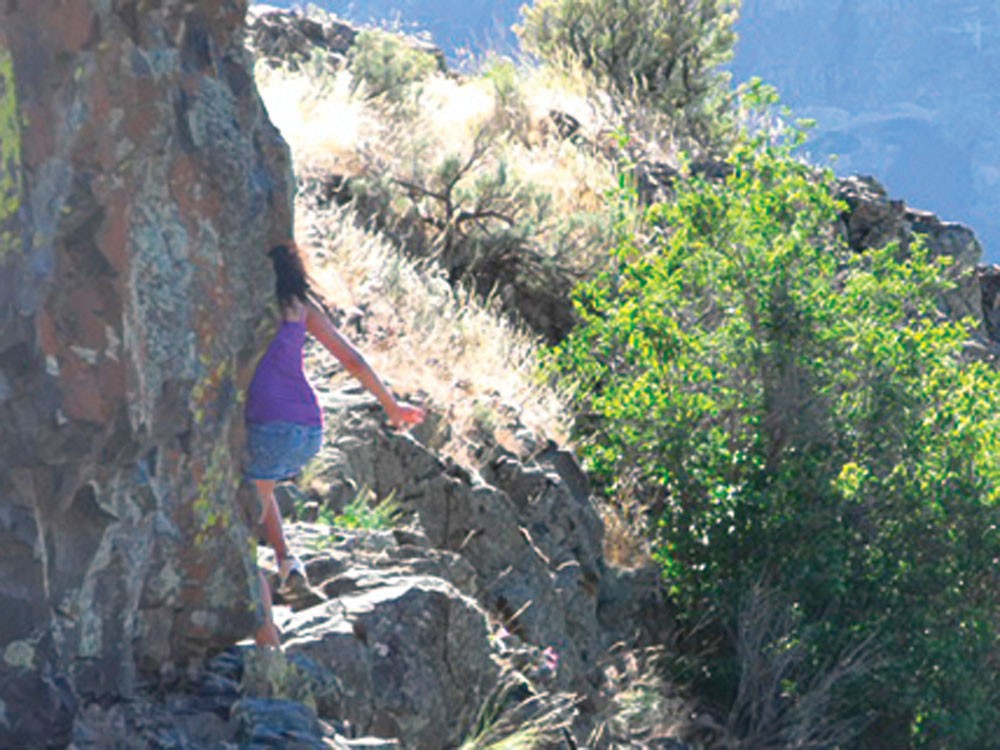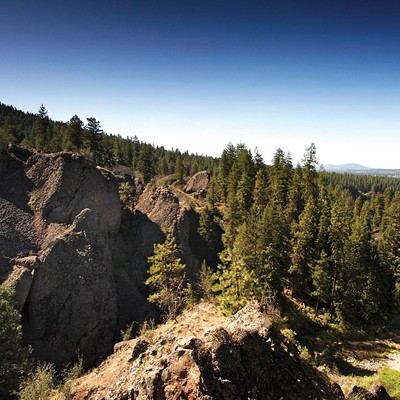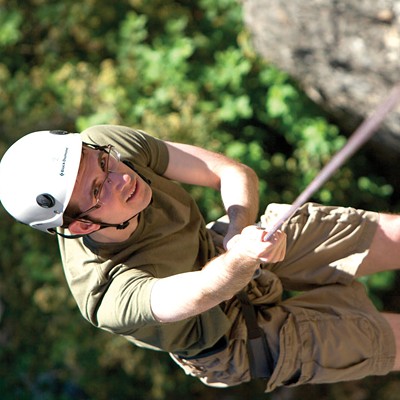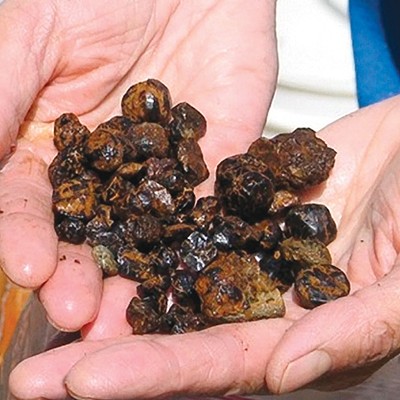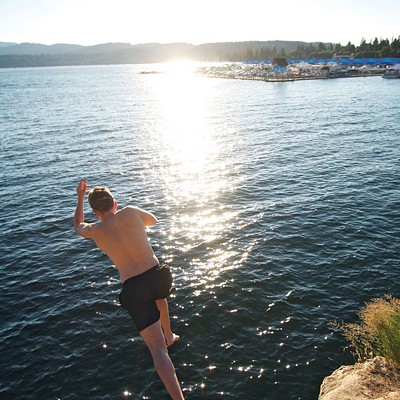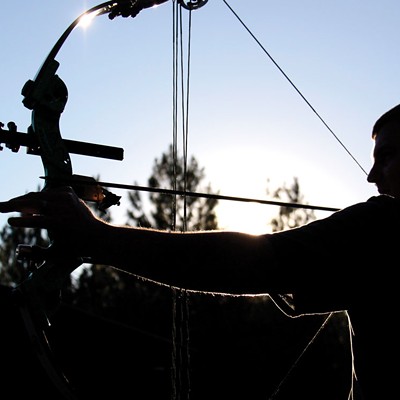Stumbling over loose rocks, I nearly pitched myself over the cliff’s edge. I was in search of a parallel coulee, just past the vertical rock wall that looms above the Lake Lenore Caves.
Didn’t fall. Didn’t find the hidden canyon, either. And certainly didn’t get much chance to do any amateur spelunking.
Because the Lake Lenore “Caves” are a state-park-sensationalized case of false advertising. They aren’t really caves. They’re more like indentations or scooped-out recesses in rock walls. You never actually get blocked off from daylight.
When the Lake Missoula Floods came rumbling through this area 13,000 years ago, they sloshed clumps of basalt right out of the surrounding rock. The clumps were about the size of a spacious living room, so you can just picture prehistoric families pausing here in between their huntings and gatherings — huddled against the cold and protected from whatever cranky animals were roaming the lakebed far below.
Today, however, any one of the Lenore hollows offers some overhang for shade, a floor covered with jagged stones, and, for wall décor, scrawled obscenities and bird guano. Lovely.
At least you’re rewarded for your 115-mile drive from Spokane with a nice hike and towering views.
And just up Highway 17, farther north of Soap Lake and much closer to Coulee City, are the truly impressive Dry Falls of the Grand Coulee — sort of a giant Niagara, minus the roaring water but sun-dried to resemble a more manageable Grand Canyon. Reader boards there inform tourists just how gigantic the Ice Age deluge was.
Which, even just in your imagination, is a lot more impressive than the Lake Lenore Dimples.
GARDNER CAVE
Creepy worms crawling on the sides of limestone columns. Rats leaving urine trails so they can smell their way around a pitch-black cavern. Upside-down dead bats, frozen in place forever. All this awaits you at Washington’s “only natural show cave,” a dozen miles north of Metaline. Even better, a half-mile hike from Gardner Cave puts you across the Canadian border. Wave hi to the grizzlies.
BOULDER CAVE
There’s a reason for the name. “Especially toward the entrance, there are a lot of boulders that came off the side of the canyon walls — huge chunks, the size of semi-trucks,” says Doug Jenkins, public information officer and interpreter for the Naches Ranger District. Located on State Route 410, 60 miles northwest of Yakima, Boulder Cave was formed by a creek carving through rock and then hitting a much softer layer of sand and debris. “It’s just massive,” Jenkins says — more than 30 feet high, 40 feet wide and 400 feet deep. “As you walk farther and farther in, the light slowly disappears.” But the impact of humans — nearly 2,000 of them over Memorial Day weekend, for example — has taken a toll. The cave’s bat population — more than a thousand back in 1901, when white people discovered the cavern — has dwindled to about 75. Fewer and fewer mama bats are nursing their young in Boulder Cave. “We put in another bat gate,” Jenkins says, “but somebody actually squeezed through and graffitied the inside chamber.”

